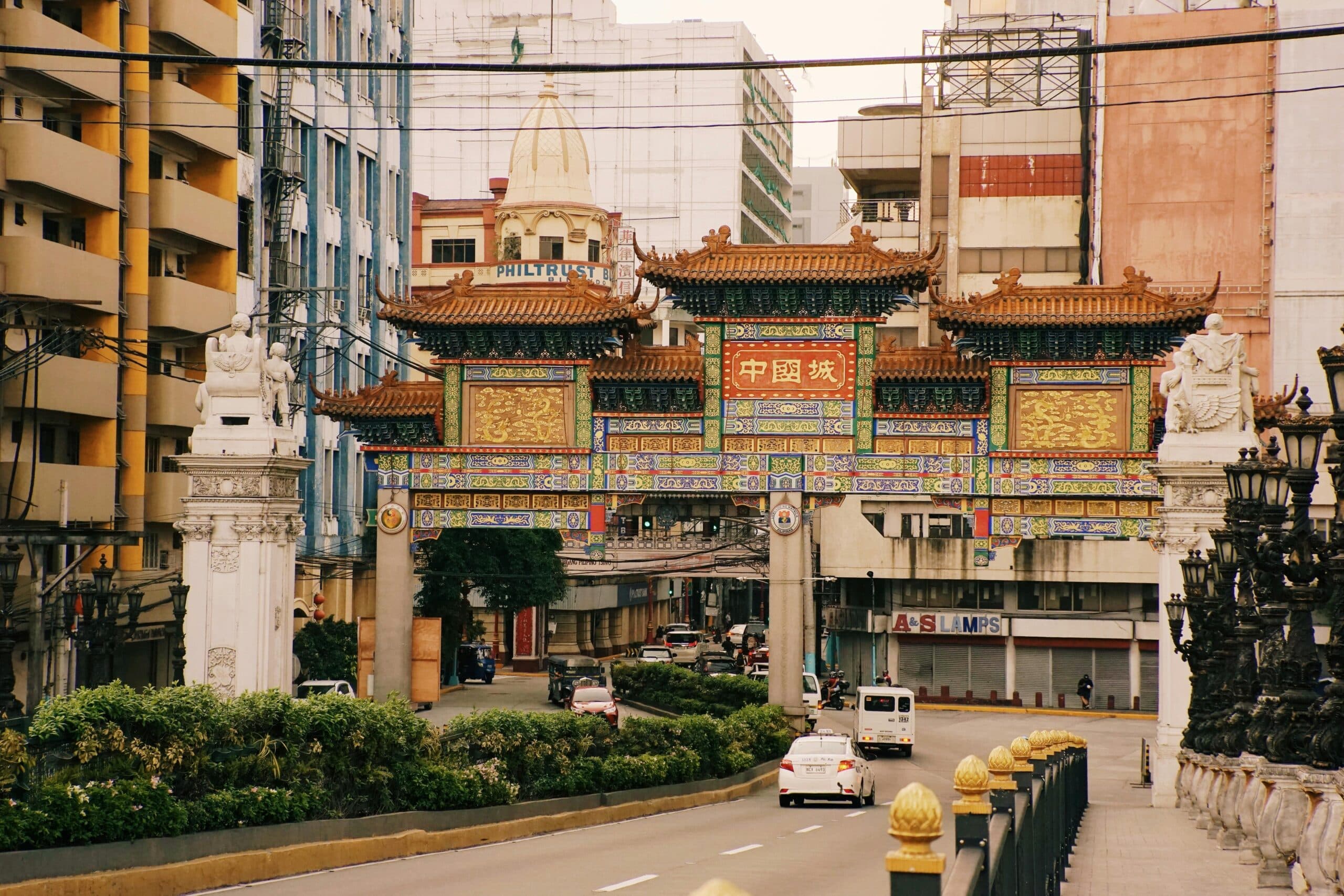A Brief History of Binondo: The World’s Oldest Chinatown
By: Melecio Martin G. Arranz IV

Key Takeaways
The history of Binondo spans over four centuries of trade, migration, and cultural fusion in Manila. Each era brought hardship and revival that shaped the district’s identity.
- Spanish colonial era (1594–1898) – Founded for Chinese Catholics and grew into Manila’s commercial hub.
- American and Japanese occupation (1898–1945) – Experienced modernization, then wartime devastation.
- Post-war peak (1946–1970s) – Rebuilt into the nation’s financial core.
- Decline and cultural shift (1980s–1990s) – Businesses moved out; heritage value gained focus.
- Modern revival (2000s–Present) – Tourism, food culture, and preservation projects thrive.
Tucked within the heart of Manila, Binondo stands as a living chronicle of centuries-old ties between Filipinos and the Chinese community. Its crowded streets, ancestral buildings, and family-run shops hold stories of trade and resilience.
What began as a small riverside settlement in 1594 grew into the world’s oldest Chinatown. You can still trace its past in the scent of herbal teas, the clang of woks, and the ornate facades that frame its narrow lanes.
These details endure because of its roots, and knowing the history of Binondo reveals why it continues to thrive today.
History of Binondo Through the Centuries
Binondo’s four-century story is one of prosperity, hardship, and transformation. Each era shaped the district’s streets, businesses, and traditions. Tracing its history through these pivotal periods can help you see how it survived and continues to serve many Filipinos.
Founding and Spanish colonial era (1594–1898)
In 1594, Spanish Governor Luis Pérez Dasmariñas founded Binondo for Chinese immigrants who converted to Catholicism. Its spot near Intramuros let the Spanish keep a close eye on residents while still giving traders access to the Pasig River. It quickly grew into Manila’s commercial hub, with Chinese-Filipino merchants prospering through the trade of silk, porcelain, spices, and local goods.
The Dominican-built Binondo Church served as a religious and community center, enduring disasters and rebuilding over the centuries. By the late 1800s, the district had grown into a bustling market town, serving as a key link between Manila and trade routes across Asia.
American and Japanese occupation (1898–1945)
American rule ushered in modernization, which involved the introduction of electric streetlights, streetcars, and improved port facilities that significantly boosted trade. Binondo’s banks and trading companies expanded, attracting both local and foreign investors.
However, the Second World War halted this progress. During the Japanese occupation, businesses shuttered, supplies dwindled, and many buildings sustained heavy damage from bombings. By 1945, war had scarred the once-vibrant commercial hub and left its economy in shambles.
Post-War reconstruction and commercial peak (1946–1970s)
After the war, Binondo rebuilt quickly. Filipino-Chinese entrepreneurs revived old businesses and launched new ventures, fueling a surge in trade and finance.
By the 1960s, the district had become home to major banks, gold traders, and wholesale markets, earning it a reputation as Manila’s financial hub. Figures like Lucio Tan and the Sy family began building the empires that shaped Philippine commerce.
Binondo became a center for community life, where schools, associations, and cultural groups helped residents share an identity. This period marked Binondo’s peak as the nation’s commercial powerhouse.
Decline and cultural transition (1980s–1990s)
By the 1980s, business districts started forming in Makati and Ortigas. Major banks and corporations relocated, leaving Binondo’s once-busy offices and trading houses behind. Economic activity slowed, and many historic buildings fell into disrepair.
Yet this decline brought a shift in identity. People began to see Binondo for its cultural and historical value. It became known less for business and more for keeping the traditions that shaped the world’s oldest Chinatown.
Heritage and modern revival (2000s–Present)
In the 2000s, Binondo re-emerged as a cultural landmark. Tourism surged, with visitors drawn to its vibrant food scene, Chinese New Year festivities, and historic heritage sites, including Ongpin Street and Escolta’s art deco buildings. Local government and private groups began restoration projects, though rising property values and gentrification posed new challenges.
Today, Binondo blends old and new. Ancestral shopfronts stand beside modern developments, and long-standing family businesses share the streets with trendy cafés. Its riverside location and cultural roots make it a historical treasure and a community that continues to evolve.
Building Binondo
From its founding as a settlement for Chinese immigrants to its role as a global trading hub and now as a cultural destination, Binondo remains a symbol of Filipino-Chinese heritage. When you walk its streets today, you can see the layers of business, faith, and tradition that helped create Manila itself.
If you want to be part of this living history, premier real estate developer Federal Land offers Binondo condo units at Four Season Riviera, a riverside home in the heart of historic Chinatown.
With spacious layouts, scenic views of the Pasig River, and curated amenities designed for families, it combines modern comfort with Oriental elegance. At Four Season Riviera, you don’t just live near history—you live in it.
Learn more about this condo and other properties from Federal Land, Inc..
FAQs
1. When and why was Binondo established?
Binondo was founded in 1594 by Spanish Governor Luis Pérez Dasmariñas as a settlement for Chinese people who converted to Catholicism. It was placed near Intramuros, allowing the Spanish to monitor residents while facilitating trade.
2. What role did Binondo play during the Spanish colonial period?
During the Spanish colonial period, Binondo grew into Manila’s commercial hub. Chinese-Filipino merchants traded silk, porcelain, spices, and local goods, while the Dominican-built Binondo Church anchored the community.
3. How did World War II affect Binondo’s development?
During the Japanese occupation, businesses closed, supplies ran low, and bombings destroyed many buildings. The war ruined Binondo’s economy by 1945.
4. Why did Binondo experience a commercial decline in the late 20th century?
In the 1980s–1990s, banks and corporations relocated to Makati and Ortigas. It slowed economic activity in Binondo and left many historic structures in disrepair.
5. What drives Binondo’s cultural and heritage revival today?
Tourism, heritage preservation projects, food culture, and Chinese New Year celebrations re-established Binondo as a vibrant cultural landmark.

